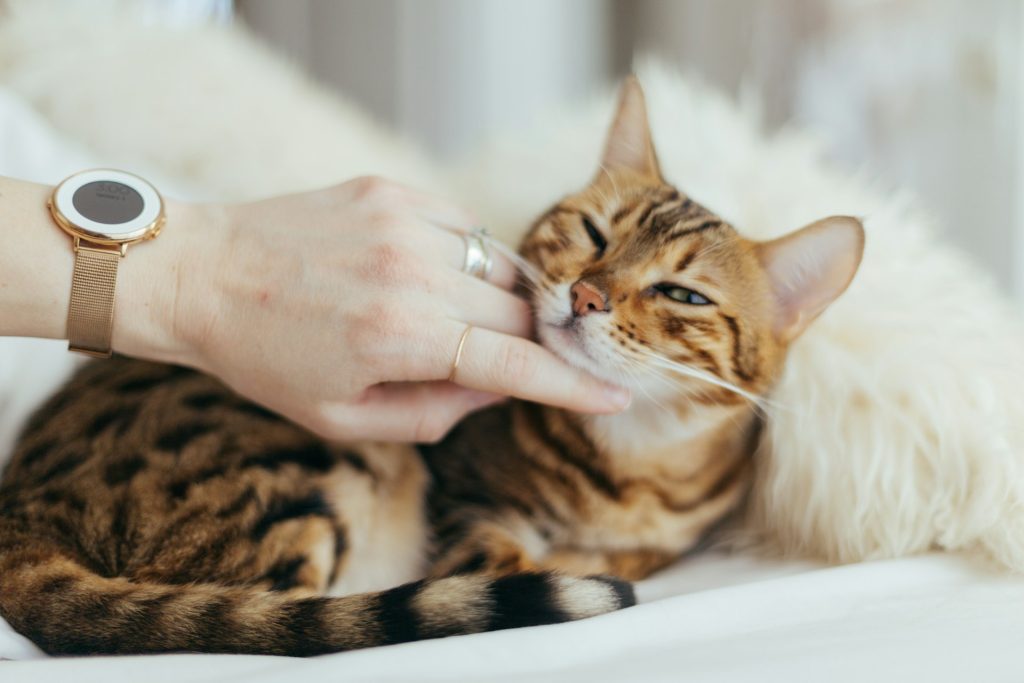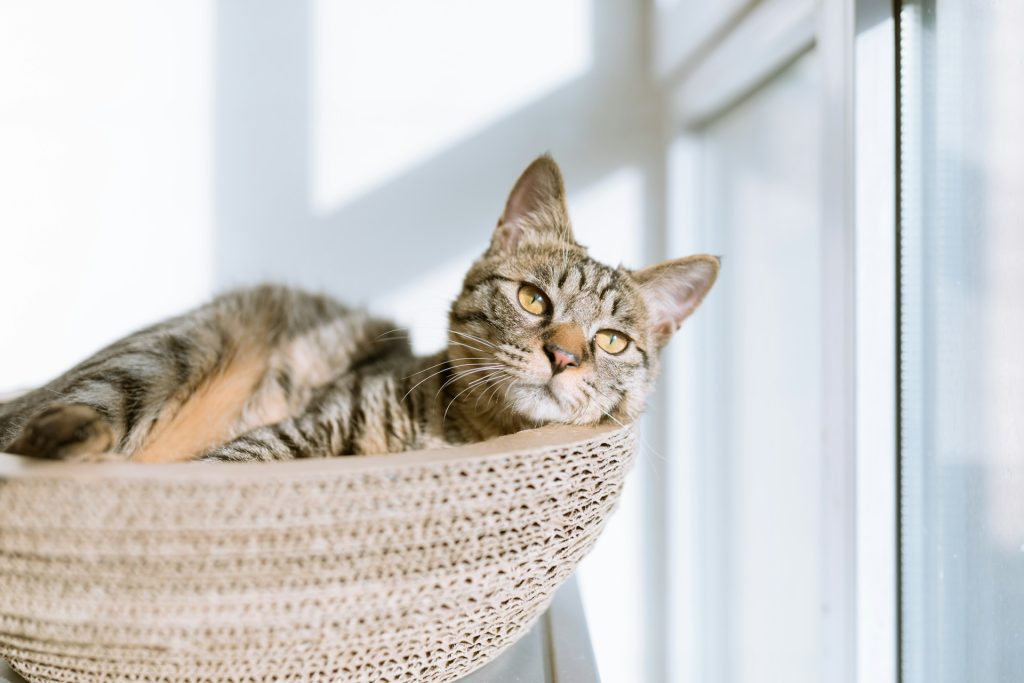Table of Contents
Coughing in cats is often more complex than the occasional hairball. When irritants, dust, mucus, or other particles enter their airways, cats reflexively cough to clear these obstructions. This protective reflex can indicate various conditions, ranging from feline asthma and respiratory infections to heartworms and allergies. Observing your cat’s coughing patterns is crucial since a cough is not a disease but a symptom of potential underlying issues.
Understanding Cat Coughs: More Than Just Hairballs
If you notice your cat coughing but no hairball, monitoring for other symptoms your cat may exhibit is essential. Frequent coughing, especially without a hairball being produced, can signal conditions like feline asthma, which if untreated, can be life-threatening. Cats with asthma may adopt a characteristic posture to maximize air intake, indicating the need for veterinary attention.
Identifying Types of Cat Coughs
1. Recognizing a Dry, Non-Productive Cough
A dry cough in cats, which sounds scratchy and hacking without producing phlegm, could suggest an irritation or obstruction in the airways. During a physical examination, a veterinarian may check for foreign bodies or other causes. Diagnostic tests might be necessary to determine the source of the dry cough, as it could point to several health issues.
2. The Signs of a Moist, Productive Cough
A moist, productive cough indicates there is phlegm being expelled, which can be a sign of a respiratory problem. Such a cough is often less harsh-sounding than a dry cough but is a clear indicator that the cat’s body is attempting to clear out the irritants or infections from the respiratory tract.
3. Coughing With Accompanying Sneezing
When coughing is accompanied by sneezing, it may be a sign of an infection in cats, such as an upper respiratory infection. These infections can cause irritation and inflammation in the airways, leading to a cough often paired with sneezing and other respiratory symptoms.
4. Distinctive Cough Followed by Wheezing
Feline asthma is often characterized by a distinctive cough followed by wheezing, which indicates a constriction of the airways. Asthma in cats can be a serious condition requiring prompt veterinary care to manage the symptoms and ensure the cat’s ability to breathe properly.
When Coughing Indicates a Problem
1. Persistent Coughing Without Hairball Evacuation
If your cat is persistently coughing but no hairball is produced, it’s a sign to watch for other symptoms your cat might be displaying. Persistent coughing can be a red flag, pointing to issues beyond normal grooming behaviors and warranting a closer look by a veterinarian.
2. Coughing Paired With Weight Loss
When coughing in cats is paired with weight loss, it’s a concerning combination that may indicate a serious underlying health issue. A reduced appetite, persistent cough, and weight loss can signal conditions like feline asthma, respiratory infections, or even more severe illnesses such as asthma or bronchitis, all of which require a veterinarian to diagnose and treat effectively.
3. Frequent Coughing Episodes
Frequent coughing episodes in a cat can be distressing and may suggest chronic respiratory issues or the onset of conditions such as cat asthma. It’s essential to observe how often your cat coughs and to seek veterinary care if the cough is persistent and occurs without an apparent cause like hairballs.
4. Changes in Gum and Tongue Coloration
Changes in the coloration of a cat’s gums and tongue, especially if they turn blue or pale, can accompany coughing and signal oxygen deprivation. This can occur in severe respiratory conditions and warrants immediate veterinary attention.

The Common Culprits Behind Your Cat’s Cough
Veterinarians typically use a combination of a thorough physical examination and diagnostic tests to discern the underlying cause of a cat’s cough. Recognizing the difference between a wet cough and a dry cough in cats can provide valuable insights, as these symptoms can point toward different diagnoses, such as respiratory infections, foreign bodies, or other respiratory tract issues.
Internal and External Factors Affecting Cats
1. Asthma as a Major Cause of Feline Cough
Feline asthma is a significant cause of coughing in cats, where inflammation of the airways leads to difficulty breathing and chronic cough. Environmental triggers, such as dust, pollen, and smoke, can exacerbate this condition, making management and treatment crucial for the affected cat.
2. The Role of Allergies in Triggering Coughs
Allergies in felines can lead to inflammation of the airways, causing a persistent cough. Similar to humans, cats may be allergic to several substances such as pollen, dust, mold, or certain foods. When exposed to these allergens, their immune system reacts by releasing histamines, which can prompt coughing in cats as a way to expel the irritants.
3. The Threat of Fungal Lung Infections
Fungal lung infections, often starting from fungus from the soil, are a serious health issue in cats that can result in coughing. These infections take hold in the lungs, leading to respiratory distress. A cat with a fungal infection may exhibit a persistent cough as the body tries to clear the fungal growth from the airways.
4. Heartworms and Their Contribution to Cough
Heartworms, parasitic infections transmitted by mosquitoes, can be fatal to cats. One of the signs of heartworm disease in felines is a dry cough, caused by the damage the worms inflict on the lung vessels and tissues. If left untreated, heartworms can lead to severe respiratory complications, making early detection and treatment crucial.
When It’s Time to Seek Veterinary Care for Cat Coughing
Observing coughing in cats is a clear indication that the cat requires medical attention, especially if the cough persists or is accompanied by other signs of illness. Timely veterinary care can address the underlying cause, whether it’s a mild infection or a more serious condition like cat asthma or lung cancer.
Vet Visit: What to Expect and How to Prepare
Before a vet visit, cat owners should document symptoms and behaviors related to the cough, such as frequency and type of cough, any changes in activity, and if the cat goes outdoors. Providing thorough information helps the vet diagnose the cause and determine if the coughing is due to allergies, infections, or other medical conditions.
1. Discussing Symptoms and Behavioral Changes
During the vet visit, the owner should discuss any symptoms and behavioral changes noticed in the cat. It’s helpful to note the duration and nature of the cough, as well as if the cat is displaying any additional signs of distress such as decreased appetite or lethargy, which can help pinpoint the cause of the cough.
2. Understanding Diagnostic Procedures
Diagnostic procedures may include physical examination, imaging, and blood tests. Blood tests are crucial for identifying infections or diseases that could be causing the cough. Understanding these procedures allows owners to be better prepared for what to expect during the vet visit.
3. Evaluating Treatment Options
Once a diagnosis is made, the vet will discuss treatment options, which may range from medication to manage symptoms to more specific treatments targeting the underlying cause of the cough. Treatment plans should be tailored to the cat’s needs and health status.
Signs of Urgency in Cat Coughing Scenarios
If a cat’s coughing is severe, persistent, or accompanied by other alarming symptoms, immediate veterinary care is necessary. Coughing that does not produce a hairball or a cough that occurs with a posture indicating respiratory difficulty warrants urgent attention to prevent potentially life-threatening complications.
1. Coughing Up Blood: A Red Flag
Coughing up blood is a serious symptom that should never be ignored. It can indicate severe conditions such as bleeding disorders, lung cancer, or severe infections. When a cat exhibits this sign, it is crucial to seek emergency veterinary care to address the underlying cause immediately.
2. Coughing Accompanied by Blue Gums or Tongue
If a cat is coughing and also exhibits blue gums or tongue, it’s a sign of a serious oxygenation issue. This condition, known as cyanosis, can indicate that the blood vessels are not delivering enough oxygen throughout the body, potentially resulting from heartworm disease or a severe injury to the respiratory tract. Immediate veterinary attention is crucial to address the underlying cause and restore proper oxygen levels.
3. Coughing Paired With Severe Lethargy
When a cat’s coughing episodes are paired with severe lethargy, it is a clear indication that the feline friend may be suffering from a significant health issue. Lethargy can be a symptom of a viral respiratory infection or pleural effusion, conditions that result in coughing and can severely impact a cat’s energy levels. Such symptoms warrant prompt veterinary evaluation to determine the cause and initiate appropriate treatment.
Treatment For Cat Coughing: Professional and Home Care
Effective treatment for cat coughing requires a professional diagnosis and a strategic care plan that cat owners can manage at home. Whether the cough persists due to asthma in cats, infections, or heartworm disease, both in-clinic and at-home interventions play pivotal roles in alleviating symptoms and restoring health.
Addressing Cat Asthma and Respiratory Illness
For asthma in cats, a combination of corticosteroids to reduce inflammation and bronchodilators to dilate airways offers relief. These medications are often administered through inhalers, which directly target the lungs and minimize systemic side effects.
1. Medications and Inhalers for Relief
When addressing feline asthma, veterinarians may prescribe medications such as corticosteroids and bronchodilators. Inhalers are frequently used to deliver these drugs, effectively reducing inflammation and helping to dilate airways for easier breathing. Inhaled steroids, in particular, target the lungs directly, providing relief without the full-body side effects of systemic medications.
2. Home Environment Adjustments
Alongside medication, making adjustments to the home environment is crucial in managing a cat’s respiratory health. Cat owners should minimize exposure to dust, smoke, and strong fragrances, which can trigger coughing episodes. Additionally, using hypoallergenic bedding and maintaining a clean living space can significantly improve a feline friend’s respiratory function.

Clearing the Air: Final Thoughts on Feline Cough Care
Effective cough care for cats combines vigilant observation at home with professional veterinary diagnosis and treatment. By understanding the various cough types and taking proactive steps, you can help ensure your cat’s respiratory health and overall well-being.
Bridging Concern With Action for Your Cat’s Health
When coughing becomes a recurring problem for your cat, it’s time to bridge your concern with action. Cats are susceptible to various respiratory conditions, and early detection through regular vet visits can make a significant difference. Heartworm prevention, the use of preventative medications, and targeted treatments diagnosed with x-rays, antibiotics, and other therapies can help manage conditions causing labored breathing.
Act on your cat’s coughing if it’s persistent, or severe, or if your pet displays other symptoms such as discharge from the eyes or nose, indicating possible infections like kennel cough or Bordetella bronchiseptica. Timely veterinary attention can help discern the cause and provide appropriate treatment.
A comprehensive treatment plan is paramount when addressing your cat’s coughing. It ensures a holistic approach, combining immediate care with long-term management strategies. Such a plan, crafted by your vet, will consider all aspects of your cat’s health, addressing potential foreign objects, and underlying conditions to restore respiratory health.

Hi, I’m Zoey, a devoted mom to two charming Siamese cats. My passion lies in assisting fellow pet owners in providing optimal care for their cats. On CatsEuphoria, I share practical tips and relatable stories, inviting you to join me in appreciating the authentic bond between humans and our beloved feline companions.




